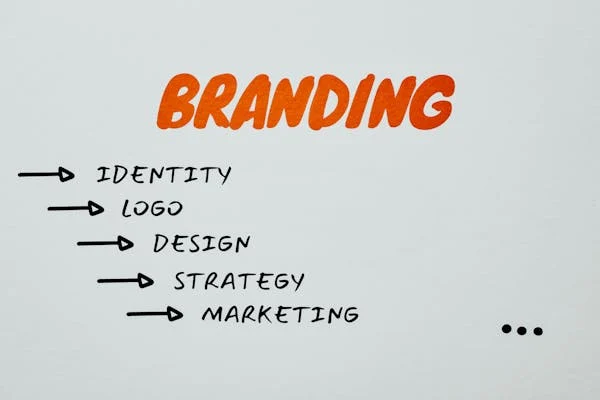In today’s digital age, building brand awareness through social media is essential for any business. With millions of users engaging on platforms like Facebook, Instagram, Twitter, and LinkedIn, the potential to reach new customers is enormous. However, standing out in the crowded social media landscape requires creativity and strategic planning. This article will explore proven social marketing ideas that can help increase your brand awareness. These ideas are designed to be practical, easy to implement, and highly effective in boosting your online presence.
Utilizing Influencer Partnerships

Finding the Right Influencers
Influencer partnerships can significantly boost your brand’s visibility. Start by identifying influencers who align with your brand values and have an audience that matches your target demographic. Look for influencers who are authentic and have high engagement rates. Tools like HypeAuditor and Influencity can help you find and vet potential influencers.
Building Authentic Relationships
Building genuine relationships with influencers is key to successful partnerships. Instead of simply paying for a one-off post, invest in long-term collaborations. This could involve sending them your products to try, inviting them to your events, or working together on content creation. Authentic partnerships are more likely to resonate with their audience and build trust in your brand.
Measuring Impact
Track the success of your influencer campaigns by monitoring metrics such as engagement rates, follower growth, and website traffic. Use tracking links and discount codes to measure conversions directly attributed to the influencer. Analyzing these metrics will help you understand the return on investment and refine your influencer strategy.
Creating Engaging Content
Developing a Content Calendar
A well-planned content calendar is essential for maintaining consistency and ensuring your content aligns with your marketing goals. Start by identifying key dates, events, and holidays relevant to your industry and audience. Plan your content around these dates to ensure timely and relevant posts.
For example, if you’re in the fitness industry, plan content around New Year’s resolutions, summer fitness goals, and holiday workout tips. A content calendar helps you stay organized and ensures a steady stream of engaging content.
Incorporating Storytelling Techniques
Storytelling is a powerful tool for creating engaging content. Instead of just presenting facts, weave your message into a story that resonates with your audience. Highlight customer experiences, share your brand’s journey, or create fictional scenarios that illustrate the benefits of your products.
For instance, a tech startup could share a story about how their product helped a small business overcome a major challenge. Use vivid imagery and relatable characters to make your story compelling and memorable.
Utilizing Data-Driven Content
Leverage data to create content that informs and engages your audience. Share industry statistics, survey results, and case studies that provide valuable insights. Data-driven content not only builds credibility but also positions your brand as a thought leader.
Create infographics, charts, and interactive content to present data in an engaging and easily digestible format. For example, an e-commerce platform could share an infographic on online shopping trends and tips for maximizing sales during peak seasons.
Experimenting with Different Content Formats
Diversifying your content formats can help keep your audience engaged and cater to different preferences. Experiment with various formats such as blog posts, videos, podcasts, infographics, and live streams. Each format has its unique advantages and can appeal to different segments of your audience.
For instance, create short, informative videos for Instagram and TikTok, in-depth blog posts for your website, and engaging podcasts for your audience to listen to on the go. Regularly analyze the performance of different formats to understand what resonates best with your audience and adjust your strategy accordingly.
Engaging with Interactive Content
Interactive content can significantly boost engagement by encouraging active participation. Examples include quizzes, polls, interactive infographics, and gamified content. This type of content not only entertains but also provides valuable insights into your audience’s preferences and behaviors.
For example, a fashion brand could create a quiz to help users find their perfect style based on their preferences. This not only engages the audience but also collects data that can be used to personalize marketing efforts.
Creating User-Centric Content
Focus on creating content that addresses your audience’s needs, interests, and pain points. Conduct surveys, analyze social media interactions, and monitor online communities to understand what topics are most relevant to your audience.
Create content that offers solutions, answers common questions, and provides actionable tips. For example, a financial services company could create content that helps small business owners manage their finances, offering tips on budgeting, cash flow management, and tax planning.
Leveraging Influencer-Generated Content
Collaborate with influencers to create content that reaches a wider audience and builds credibility. Influencers can create authentic and relatable content that showcases your products in real-life scenarios. This not only increases your reach but also provides social proof.
For instance, partner with influencers to create tutorials, reviews, and unboxing videos that highlight the features and benefits of your products. Ensure that the content aligns with your brand values and resonates with the influencer’s audience.
Analyzing and Iterating
Regularly analyze the performance of your content to understand what works and what doesn’t. Use social media analytics tools to track engagement metrics such as likes, shares, comments, and click-through rates. Gather feedback from your audience through comments, surveys, and direct interactions.
Use this data to refine your content strategy, focusing on the types of content that generate the most engagement and drive the desired outcomes. Continuous iteration and improvement are key to maintaining a dynamic and effective content strategy.
Engaging with Your Audience
Creating Interactive Content
Interactive content can significantly boost engagement by encouraging active participation from your audience. Examples of interactive content include polls, quizzes, and interactive infographics. These types of content are not only fun for your audience but also provide valuable insights into their preferences and behaviors.
For instance, a beauty brand could create a quiz to help customers find the right skincare products based on their skin type and concerns. This not only engages the audience but also educates them about the brand’s offerings.
Hosting Virtual Events
Virtual events such as webinars, workshops, and virtual meetups are excellent ways to engage your audience. They provide a platform for real-time interaction and can cover topics that are relevant and valuable to your audience. Promote these events through your social media channels and email newsletters to ensure maximum participation.
For example, a fitness brand could host a live workout session or a nutrition workshop. These events can help build a sense of community and provide a space for your audience to interact with you and each other.
Encouraging User Reviews and Feedback
Encourage your customers to leave reviews and provide feedback about your products or services. User reviews not only build trust and credibility but also provide valuable insights that can help you improve your offerings. Make it easy for your customers to leave reviews by providing links to review sites or integrating review forms on your website.
Feature positive reviews on your social media platforms to highlight customer satisfaction and encourage others to share their experiences. Responding to reviews, whether positive or negative, shows that you value customer feedback and are committed to improving their experience.
Running Social Media Takeovers
A social media takeover involves handing over your social media account to an influencer, employee, or even a loyal customer for a day. This can provide a fresh perspective and keep your content varied and engaging. Promote the takeover in advance to build excitement and encourage your audience to tune in.
For instance, a fashion brand could have a popular fashion blogger take over their Instagram account, sharing styling tips and behind-the-scenes content. This not only provides engaging content but also introduces your brand to the influencer’s followers.
Utilizing Storytelling
Storytelling is a powerful tool for building emotional connections with your audience. Share stories that resonate with your audience and reflect your brand’s values. This could include customer success stories, the journey of your brand, or the inspiration behind a new product.
For example, a sustainable fashion brand could share stories about the artisans who create their products and the impact of sustainable practices on their communities. This helps humanize your brand and creates a deeper connection with your audience.
Implementing Chatbots for Instant Engagement
Chatbots can enhance engagement by providing instant responses to customer inquiries. They can be used to answer frequently asked questions, provide product recommendations, and even assist with placing orders. This not only improves customer service but also keeps your audience engaged by providing immediate assistance.
For example, an e-commerce store could implement a chatbot on their website and social media platforms to help customers find products, track orders, and resolve issues quickly. This ensures a seamless and engaging customer experience.
Creating a Loyalty Program
Develop a loyalty program that rewards your audience for their engagement and purchases. Offer points for actions such as following your social media accounts, sharing your content, or making purchases. These points can be redeemed for discounts, free products, or exclusive access to events.
Promote your loyalty program on your social media channels and provide regular updates on new rewards and benefits. This not only incentivizes engagement but also fosters long-term loyalty and brand advocacy.
Engaging in Social Listening
Social listening involves monitoring social media platforms for mentions of your brand, competitors, and industry-related keywords. This allows you to gain insights into customer sentiments, identify trends, and engage with your audience in real-time. Use tools like Brandwatch, Hootsuite, or Sprout Social to set up social listening.
Respond to mentions, address concerns, and join conversations to show that you are actively listening and engaging with your audience. This can help build a positive brand image and foster stronger relationships with your customers.
Collaborating with Other Brands
Finding Complementary Brands
Collaborating with other brands can help you tap into new audiences and increase your reach. Look for brands that complement your products or services but are not direct competitors. For example, a fitness apparel company might collaborate with a nutrition brand. Identify potential partners by researching brands that share your target audience.
Creating Collaborative Content
Once you’ve identified potential partners, brainstorm ways to create collaborative content. This could include co-hosting webinars, creating joint social media campaigns, or producing content that features both brands. Collaborative content can introduce your brand to a new audience and build credibility through association with another reputable brand.
Measuring Success
As with any marketing strategy, it’s important to measure the success of your collaborations. Track metrics such as engagement rates, follower growth, and sales to determine the impact of the partnership. Use this data to refine your approach and identify the most effective types of collaborations.
Leveraging User-Generated Content
Encouraging User Participation
User-generated content (UGC) is a powerful way to build trust and credibility. Encourage your customers to share their experiences with your products or services. You can do this by creating branded hashtags and running contests that invite users to share their photos or videos. For example, a skincare brand might ask customers to share their before-and-after photos using a specific product.
Featuring UGC on Your Platforms
Once you start receiving UGC, feature it prominently on your social media platforms. Share customer photos, videos, and testimonials on your Instagram feed, Facebook page, and Twitter account. This not only provides you with authentic content but also makes your customers feel valued and appreciated. Always credit the original creators to encourage more participation.
Creating a UGC Campaign
Developing a dedicated UGC campaign can help you collect more content and engage your audience. For instance, you could launch a monthly UGC contest where the best submission wins a prize. Promote the campaign across all your marketing channels and encourage your customers to participate. Highlight the winning entries to motivate others to join in future contests.

Using Social Media Advertising
Targeting Your Audience
Social media advertising allows you to reach a highly targeted audience. Use platforms like Facebook Ads, Instagram Ads, and LinkedIn Ads to create targeted campaigns. Define your audience based on demographics, interests, and behaviors to ensure your ads reach the right people. Utilize the advanced targeting options available on these platforms to refine your audience and maximize your ad spend.
Crafting Compelling Ad Content
The success of your social media ads depends on the quality of your ad content. Create compelling visuals and copy that grab attention and clearly communicate your message. Use high-quality images, engaging videos, and strong calls to action to encourage users to click on your ads. Test different ad formats and creatives to see what resonates best with your audience.
Analyzing Ad Performance
Regularly analyze the performance of your social media ads to identify what’s working and what isn’t. Track key metrics such as click-through rates, conversion rates, and return on ad spend. Use this data to optimize your campaigns and improve your results over time. A/B testing different ad elements can also help you refine your approach and achieve better outcomes.
Engaging with Influencers
Building Genuine Relationships
Influencer marketing can significantly boost your brand awareness when done right. Start by identifying influencers who align with your brand values and have a genuine connection with their audience. Reach out to them with personalized messages and build genuine relationships. Offer value beyond monetary compensation, such as exclusive access to your products or invitations to events.
Collaborating on Content
Work with influencers to create authentic and engaging content that showcases your brand. This could include sponsored posts, product reviews, or takeover events where influencers control your social media account for a day. Ensure that the content feels natural and aligns with both your brand and the influencer’s style. Authentic collaborations are more likely to resonate with the audience and build trust.
Measuring Influencer Impact
Track the impact of your influencer collaborations by monitoring engagement metrics, follower growth, and sales. Use unique discount codes or tracking links to attribute sales directly to the influencer campaign. Analyzing these metrics will help you understand the return on investment and refine your influencer strategy for future campaigns.
Creating Valuable Content
Crafting High-Quality Blog Posts
High-quality blog posts are a cornerstone of valuable content. They not only drive traffic to your website but also establish your brand as an authority in your industry. Focus on creating in-depth, well-researched articles that provide actionable insights and solutions to your audience’s problems.
For example, if you run a digital marketing agency, write comprehensive guides on topics like SEO best practices, social media strategies, and content marketing tips. Use real-life examples, case studies, and data to support your points and make your content more credible and engaging.
Developing Comprehensive Ebooks and Whitepapers
Ebooks and whitepapers are excellent for providing in-depth knowledge on complex topics. They can serve as lead magnets, helping you collect email addresses and build your subscriber list. Choose topics that are highly relevant to your audience and address their key challenges.
For instance, a startup in the fintech industry could create an ebook on “The Future of Digital Payments” or a whitepaper on “Blockchain Technology in Financial Services.” Ensure that these resources are well-researched, visually appealing, and offer significant value to your readers.
Creating Video Tutorials and Webinars
Video content is highly engaging and can effectively convey complex information. Create video tutorials and webinars that educate your audience on various topics related to your industry. These can be how-to guides, product demos, or expert interviews.
For example, a software company could produce video tutorials on how to use their products, while a health and wellness brand might host webinars on fitness tips and nutrition advice. Promote these videos on your social media channels and embed them on your website to maximize reach and engagement.
Producing Case Studies
Case studies are powerful tools for showcasing your success stories and demonstrating the impact of your products or services. They provide detailed accounts of how your solutions have helped clients achieve their goals, offering tangible proof of your value.
When creating case studies, focus on storytelling. Highlight the challenges faced by the client, the solutions you provided, and the results achieved. Use quotes, statistics, and visuals to make the case study more compelling and relatable. For example, a marketing agency could produce a case study on how they helped a client increase their website traffic by 200% through a targeted SEO campaign.
Offering Free Tools and Resources
Providing free tools and resources can significantly increase your brand’s value proposition. These could be templates, calculators, checklists, or any other tools that help your audience solve specific problems. Free resources not only attract potential customers but also position your brand as a helpful and reliable source of information.
For example, a project management software company could offer free project planning templates, while a financial advisory firm might provide budgeting calculators. Promote these resources through your blog, social media, and email newsletters to drive traffic and engagement.
Hosting Q&A Sessions and Live Chats
Engage with your audience in real-time through Q&A sessions and live chats. These interactive formats allow you to address your audience’s questions and concerns directly, providing immediate value. Use platforms like Instagram Live, Facebook Live, or YouTube Live to host these sessions.
Prepare for these sessions by gathering common questions and concerns from your audience. During the session, encourage participation by inviting viewers to ask questions in real-time. Follow up with a summary or highlight reel to keep the conversation going and provide additional value to those who missed the live event.
Publishing Research and Insights
Conduct original research and share your findings with your audience. This could involve surveys, industry reports, or market analysis. Publishing unique insights sets your brand apart as a thought leader and provides valuable information that your audience can use to make informed decisions.
For example, a digital marketing firm could conduct a survey on the latest trends in social media marketing and publish the results in a detailed report. This not only provides value to your audience but also generates media coverage and backlinks, boosting your brand’s visibility and authority.
Building a Content Library
Create a content library that organizes all your valuable content in one place. This makes it easy for your audience to find and access the information they need. Include categories such as blog posts, ebooks, whitepapers, video tutorials, and case studies.
Promote your content library on your website and social media channels. Regularly update it with new content to keep your audience engaged and coming back for more. A well-organized content library not only enhances user experience but also reinforces your brand as a go-to resource in your industry.
Participating in Online Communities

Identifying the Right Communities
To effectively participate in online communities, first identify the ones that are most relevant to your industry and target audience. Look for groups on platforms like Facebook, LinkedIn, Reddit, and specialized forums. These communities should be active, with regular posts and engagement from members.
Use tools like Google Alerts to monitor discussions about your industry, products, or brand. This can help you identify where your target audience is most active and join those conversations.
Providing Value-Added Contributions
Once you’ve joined relevant communities, focus on providing value-added contributions. This means sharing insightful content, answering questions, and offering solutions to problems. Avoid overtly promoting your products or services, as this can come across as spammy and insincere.
For example, if you’re part of a tech startup community, share your expertise on emerging technologies, provide helpful tips, or contribute to discussions about industry trends. This positions you as a knowledgeable and helpful member of the community, which can enhance your brand’s reputation and credibility.
Hosting Community Events
Take your engagement a step further by hosting events within the online communities you participate in. This could be a webinar, a live Q&A session, or an online workshop. Hosting events can help you showcase your expertise, provide valuable content, and directly interact with community members.
Promote these events within the community and on your other social media channels to maximize attendance. Follow up with participants after the event to keep the conversation going and maintain engagement.
Creating Your Own Community
Consider creating your own online community centered around your brand or industry. This can be a Facebook group, a LinkedIn group, or a forum on your website. By creating your own community, you can control the conversation and foster a space where your audience can connect, share experiences, and engage with your brand.
To keep the community active and engaging, regularly post content, moderate discussions, and encourage members to contribute. Offer exclusive content, early access to products, or special events to incentivize participation and build a loyal community.
Leveraging Community Insights
Participating in online communities provides a wealth of insights into your audience’s needs, preferences, and pain points. Use these insights to inform your marketing strategies, product development, and customer service improvements. Pay attention to recurring questions, common challenges, and popular discussion topics.
For example, if you notice that community members frequently ask about a particular feature or service, consider creating content that addresses these questions or developing a product that solves their problems. This not only demonstrates that you’re listening to your audience but also helps you stay ahead of industry trends.
Building Relationships with Key Influencers
Within any online community, there are often key influencers who have a significant impact on discussions and opinions. Identify these influencers and build relationships with them. Engage with their content, join their discussions, and offer your insights.
Building relationships with key influencers can help you gain credibility and increase your visibility within the community. These influencers can also become valuable partners in promoting your brand and reaching a wider audience.
Engaging Consistently
Consistency is key to maintaining a strong presence in online communities. Regularly participate in discussions, share valuable content, and engage with other members. This helps you build a reputation as a reliable and active member of the community.
Set aside time each day or week to engage with the communities you’re part of. This ensures that your participation is consistent and that you remain top of mind with other members.
Measuring Your Impact
To gauge the effectiveness of your participation in online communities, track key metrics such as engagement levels, the number of new connections or followers, and referrals to your website or social media profiles. Use tools like Google Analytics to monitor traffic from community links and assess the impact on your overall brand awareness.
Gather feedback from community members to understand how your contributions are perceived and identify areas for improvement. This can help you refine your approach and enhance your engagement strategies.
Conclusion
Increasing brand awareness through social media is essential in today’s digital age. By utilizing proven social marketing ideas, you can effectively reach and engage with a broader audience. Strategies such as influencer partnerships, creating engaging content, and leveraging user-generated content can significantly boost your brand’s visibility. Engaging directly with your audience through interactive content, hosting virtual events, and implementing chatbots for instant engagement are all practical ways to build stronger connections with your followers.
Collaborating with other brands and participating in online communities can further extend your reach and introduce your brand to new potential customers. It’s important to continuously measure and analyze the performance of your social media efforts to refine your strategies and ensure they align with your business goals.
Read Next:
- Advanced Link-Building Strategies for Educational SEO
- Core Web Vitals: Why Speed Matters for Educational Sites
- Why Online Courses Need SEO More Than Ever
- Keywords 101: The Backbone of SEO for Educational Websites
- Understanding SEO for Educational Institutions: A Beginner’s Guide
- Local SEO for Schools: A Comprehensive Guide






















Comments are closed.